Abstract
Long-term inhalation and intraperitoneal injection studies were undertaken with laboratory rats treated with a specially prepared short-fibre sample of Canadian chrysotile asbestos. This was compared, at an equal mass dose, to dust generated from the same chrysotile batch so as to contain the highest possible number of long fibres. The long-fibre cloud contained roughly five times more fibres greater than 5 micron in length as seen by phase contrast optical microscopy (PCOM). For increasing lengths, the ratio between the dust clouds increased progressively, reaching over 80: 1 for fibres greater than 30 microns in length. Rats treated with long-fibre chrysotile developed six times more advanced interstitial fibrosis (asbestosis) than animals treated with short-fibre chrysotile and three times more pulmonary tumours. At the end of the 12-month dusting period, three times more short chrysotile than long had been retained in the rat lung tissues. During the following 6 months, however, the short-fibre chrysotile was removed from the lungs much more rapidly than the long. Following intraperitoneal injection at a mass dose of 25mg of dust, both long and short chrysotile produced mesotheliomas in more than 90% of rats. At a dose level of 2.5mg of dust, the short-fibre chrysotile produced mesotheliomas in only one-third as many rats as the long-fibre dust which still produced mesotheliomas in more than 90% of animals injected. At a dose level of 0.25mg of dust, the short-fibre chrysotile produced no mesotheliomas while the long-fibre chrysotile still produced these tumours in 66% of rats. In the two highest doses, where short-fibre chrysotile produced mesotheliomas, the mean tumour induction period was significantly longer than for tumours produced by long chrysotile.
Full text
PDF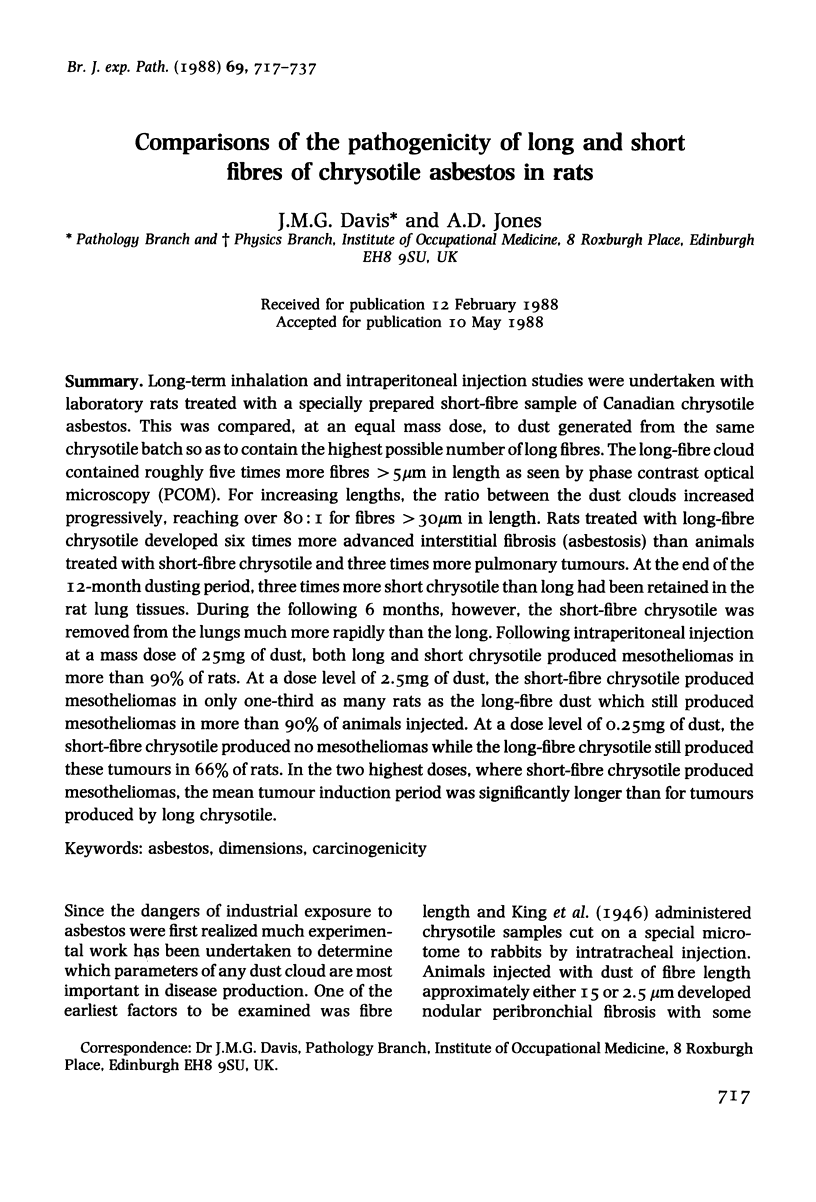

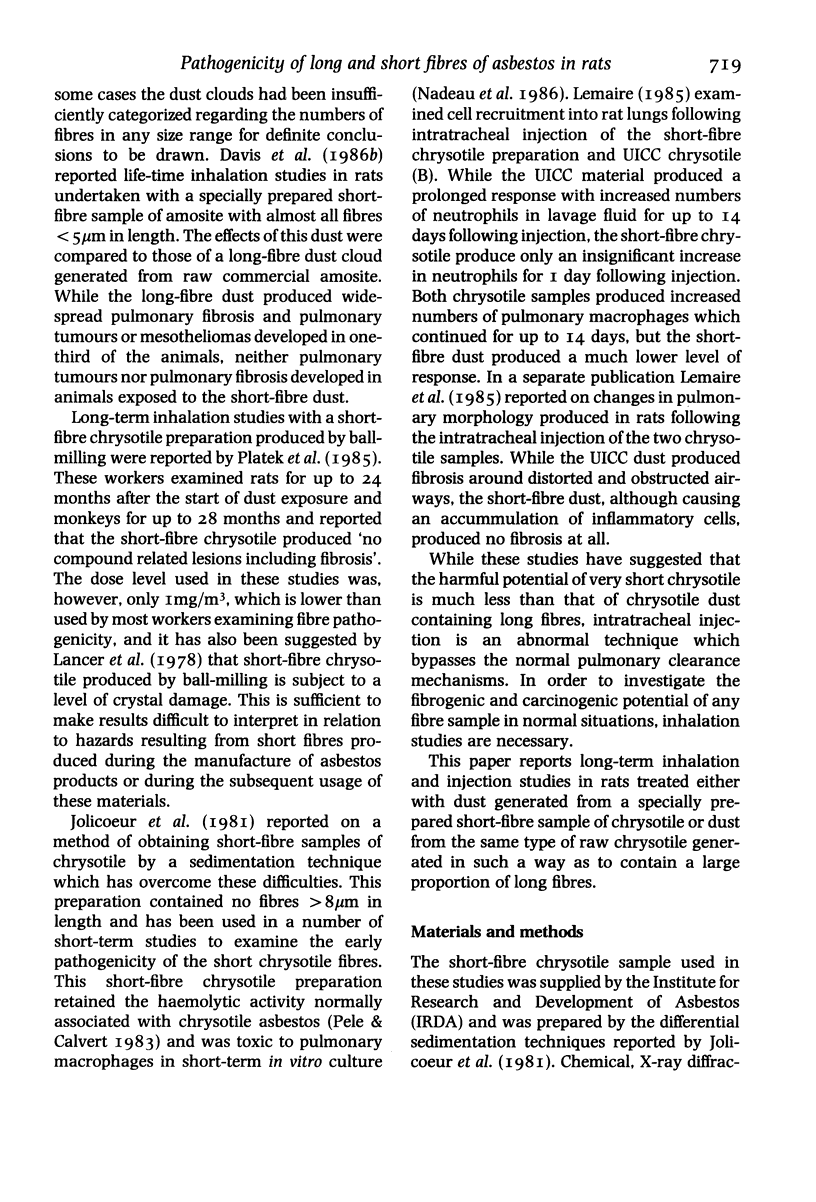

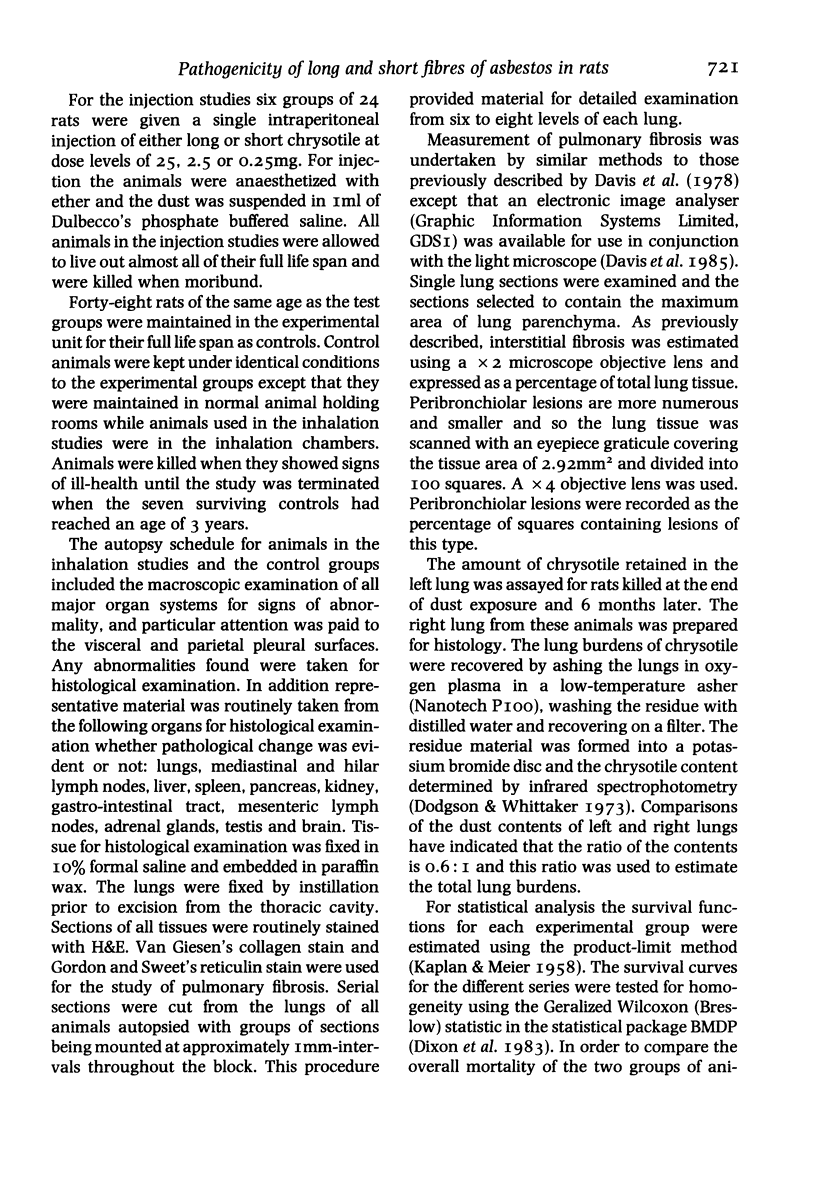
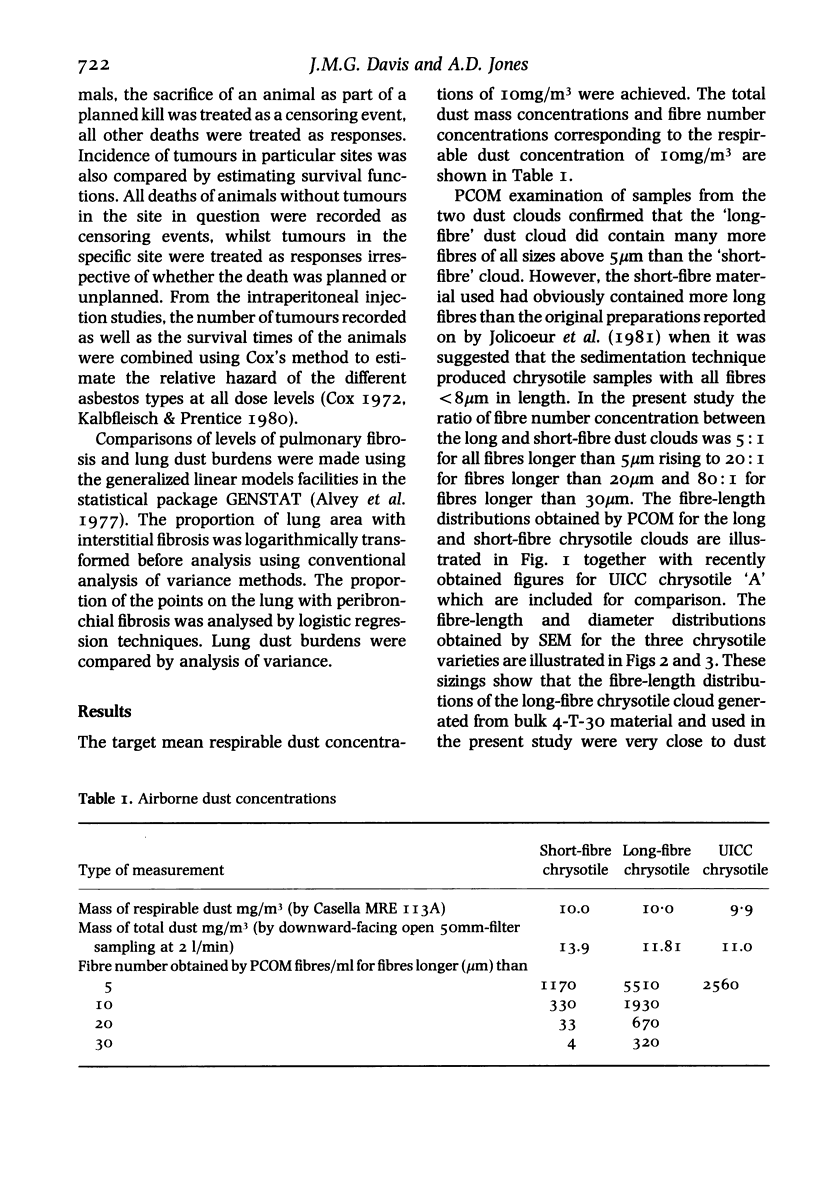
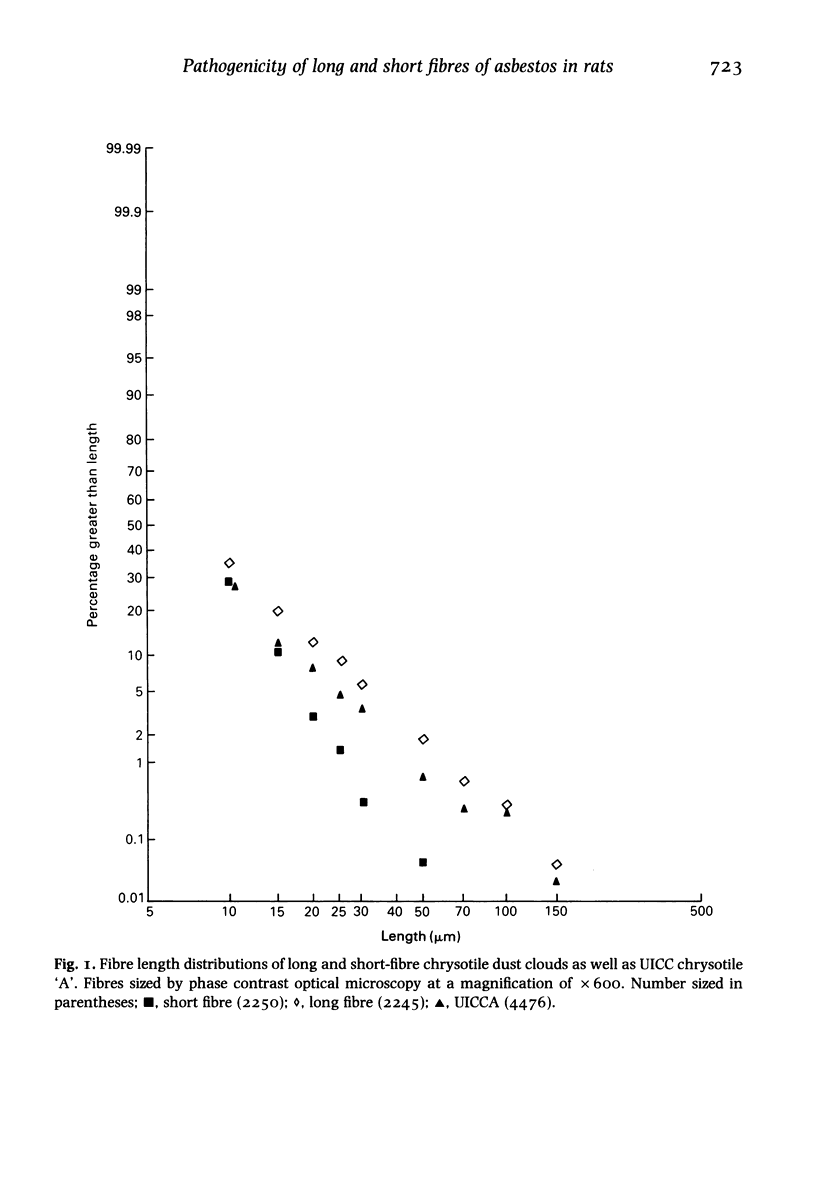
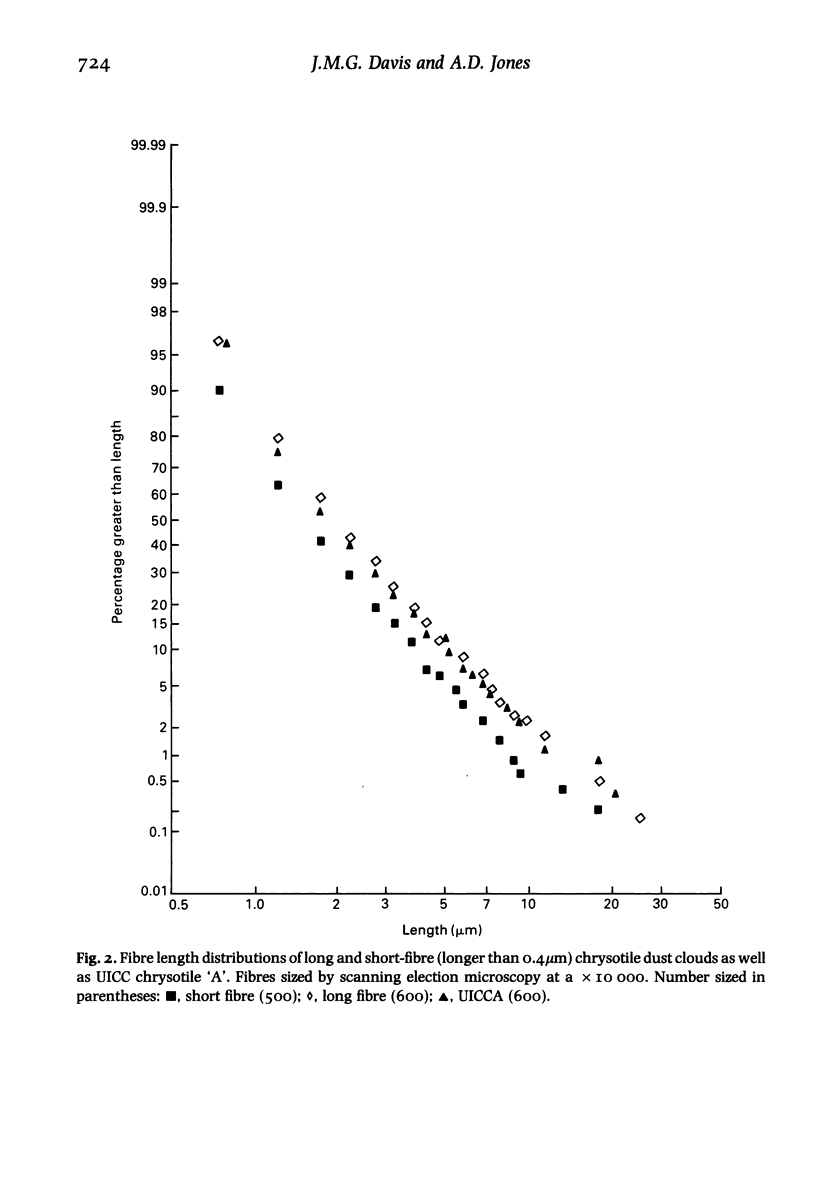
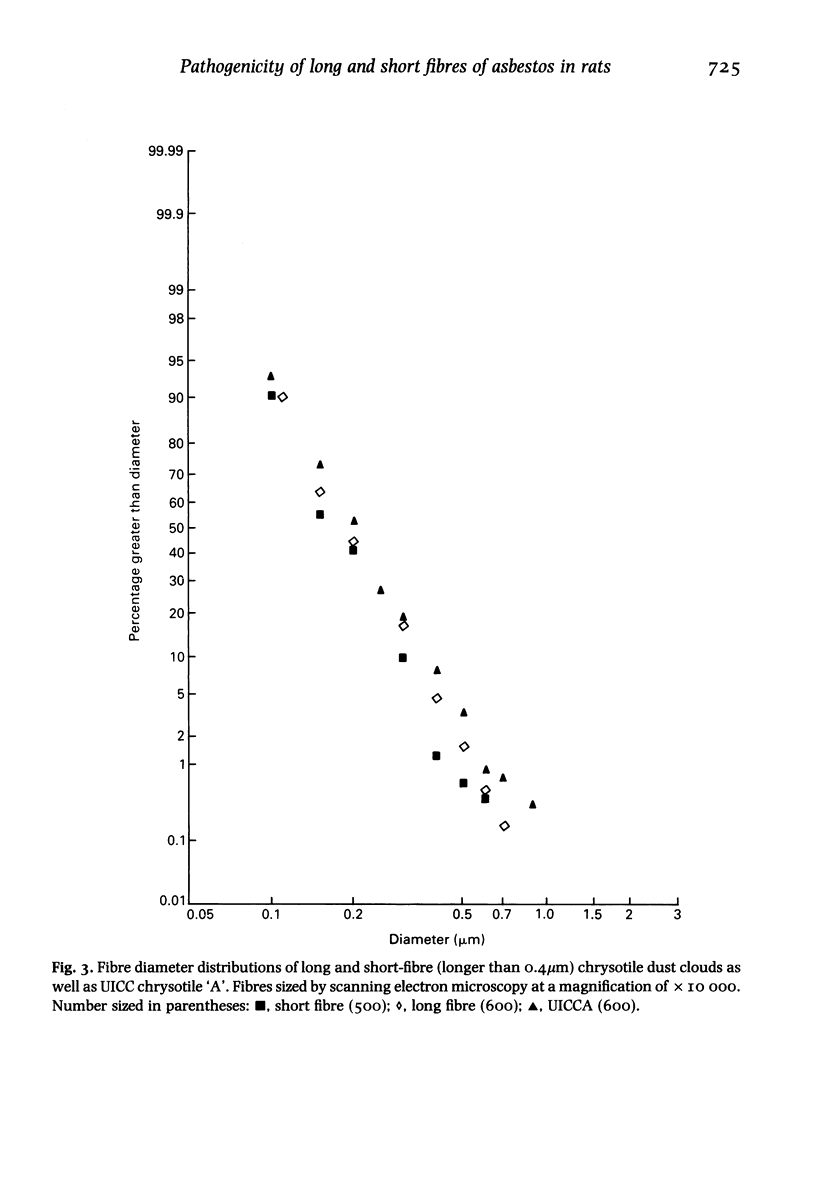
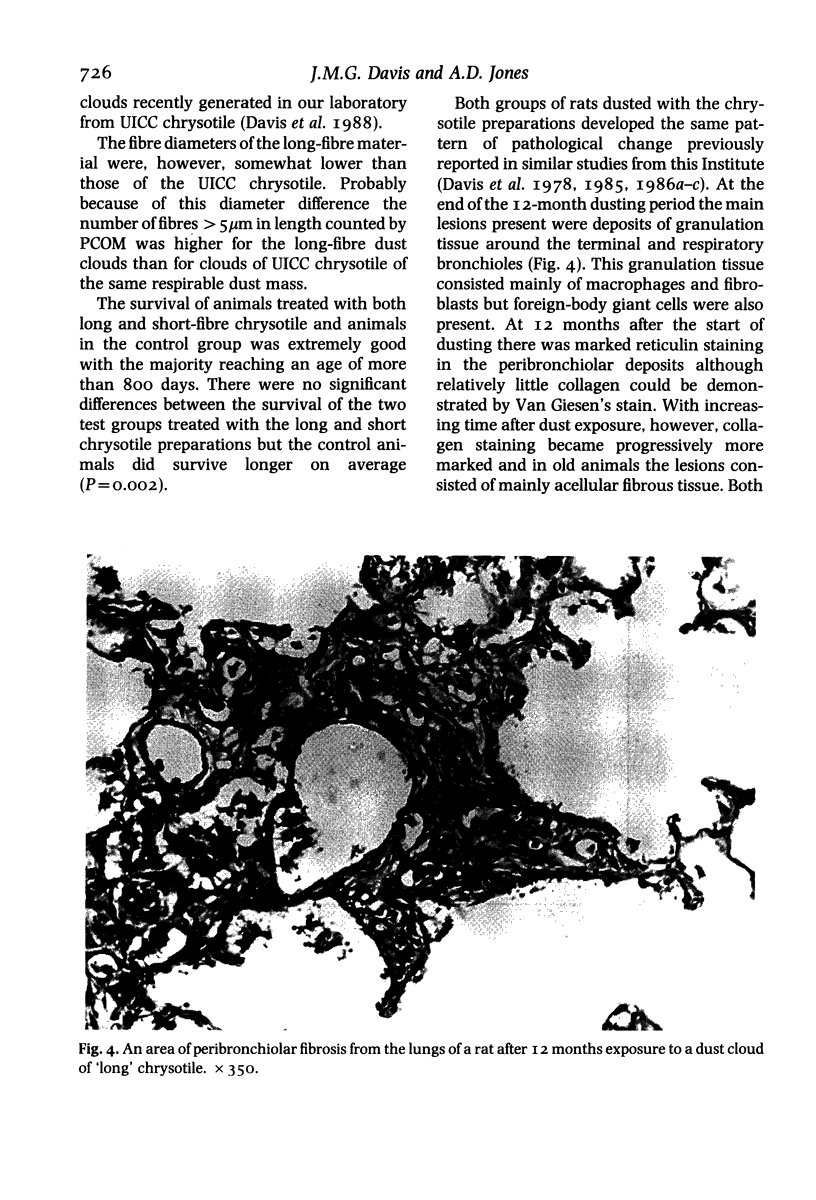

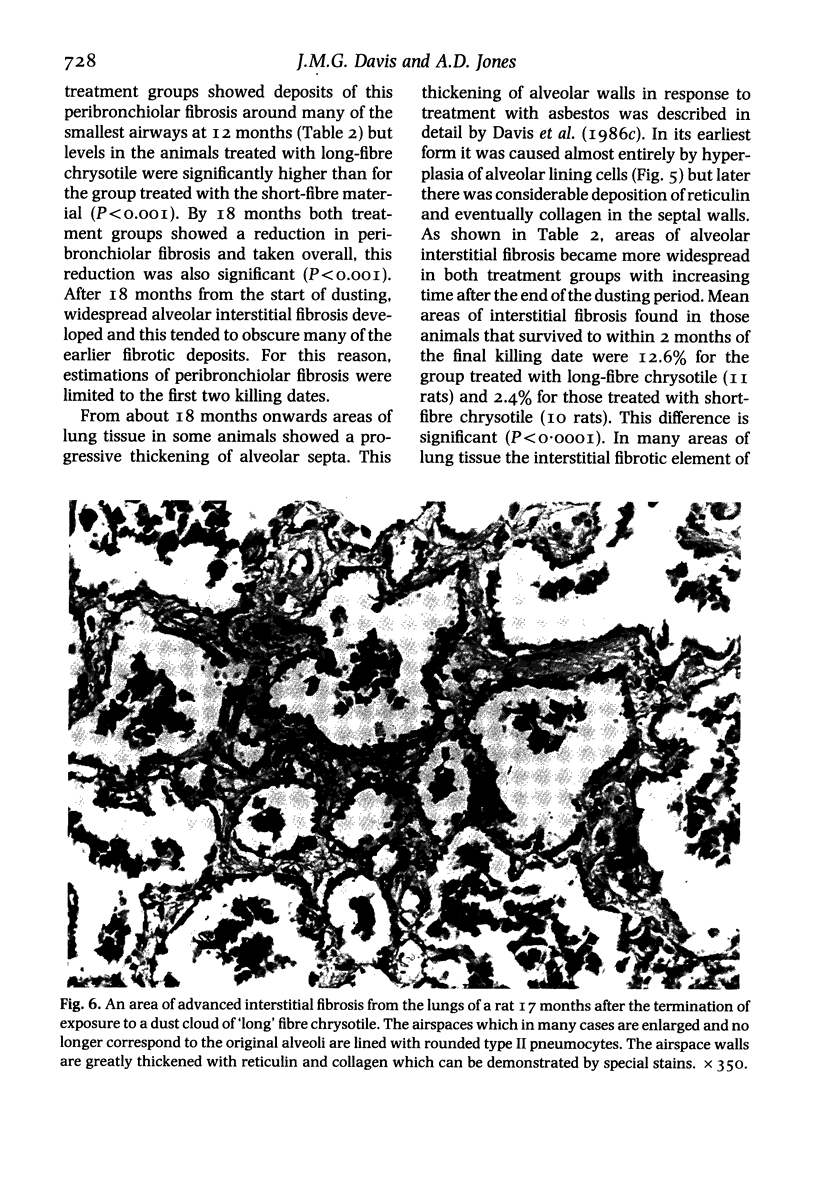
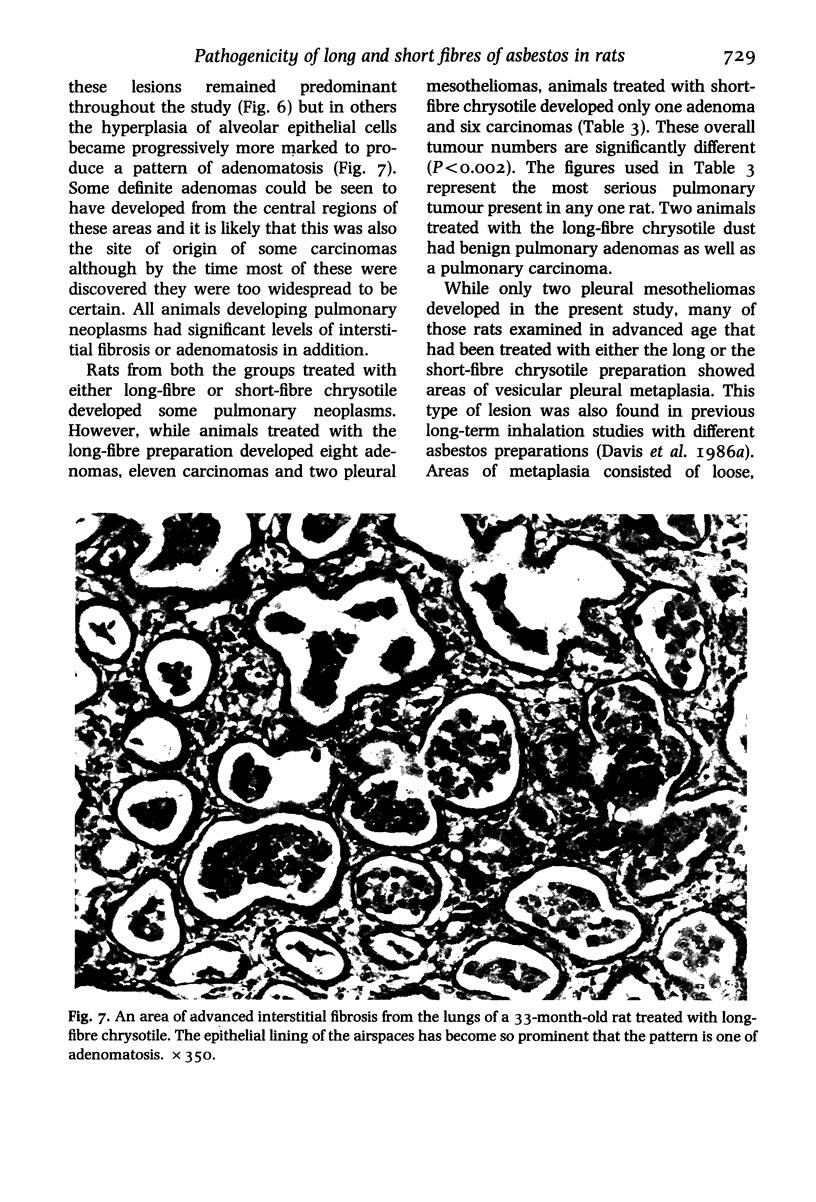

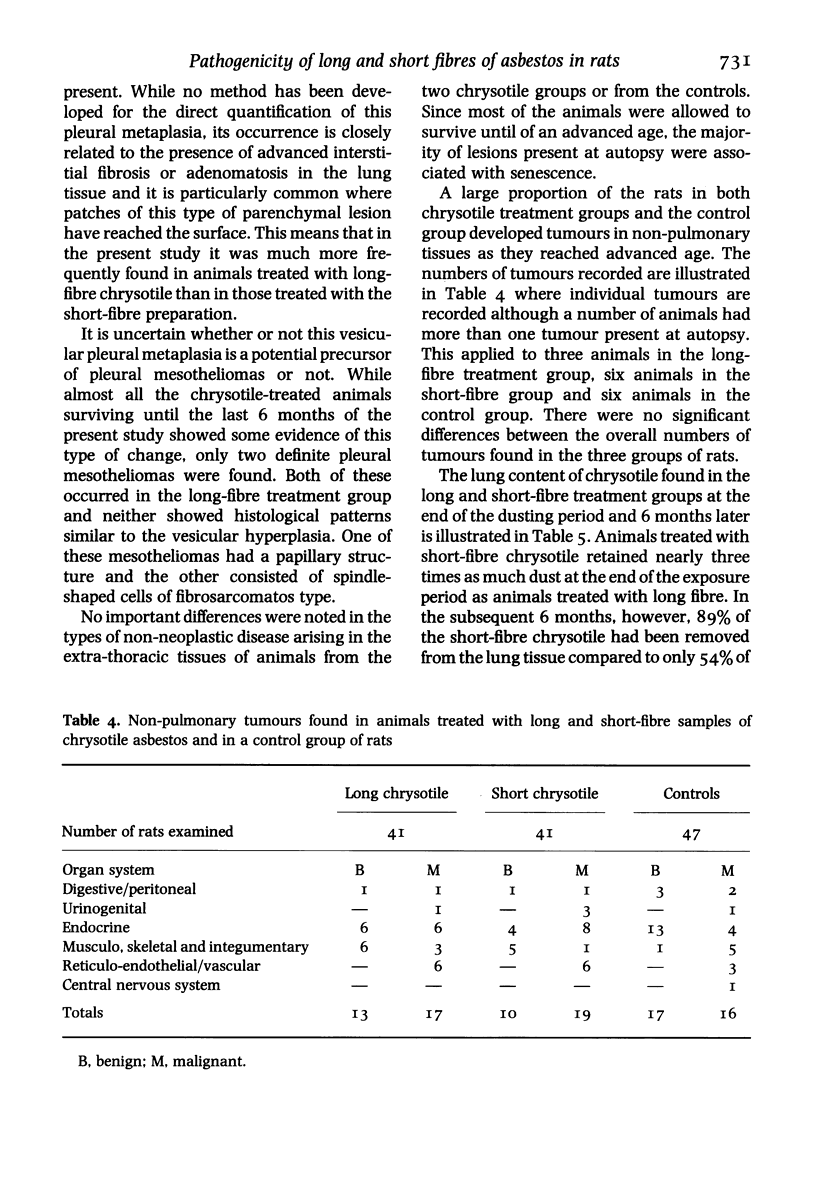
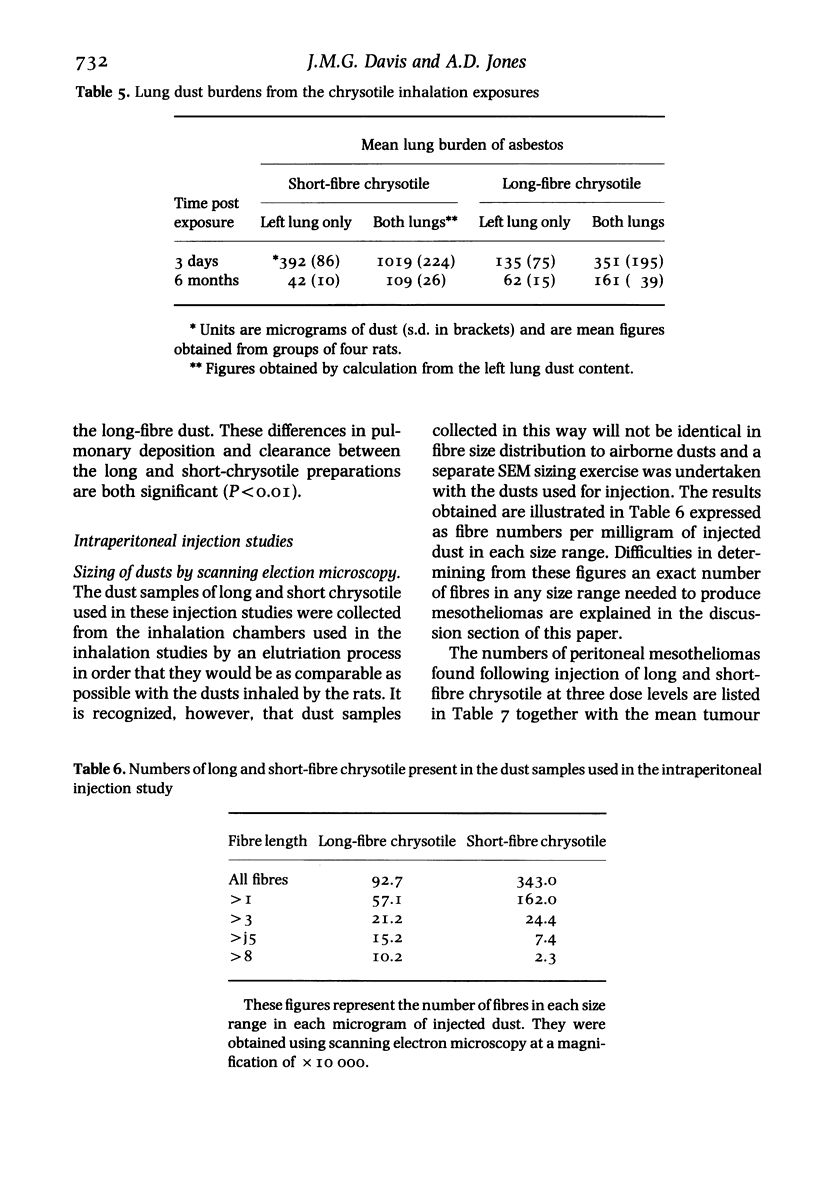
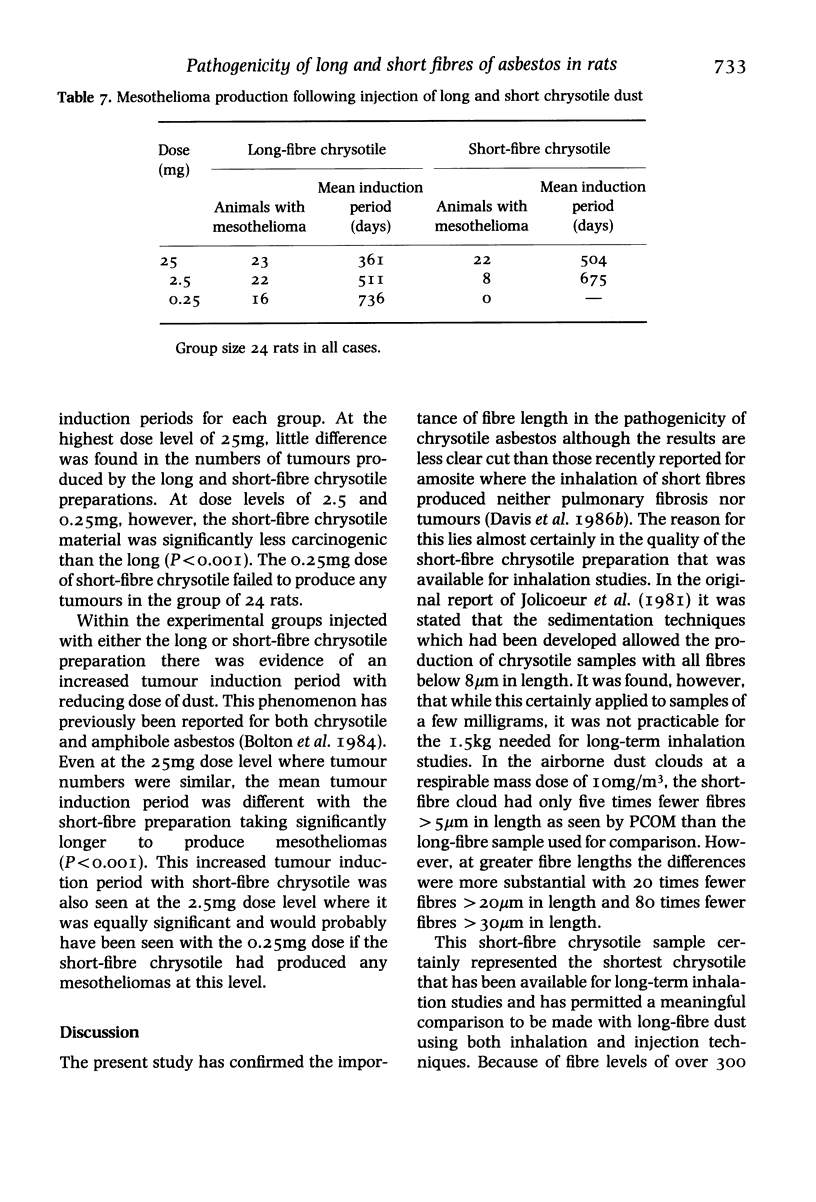


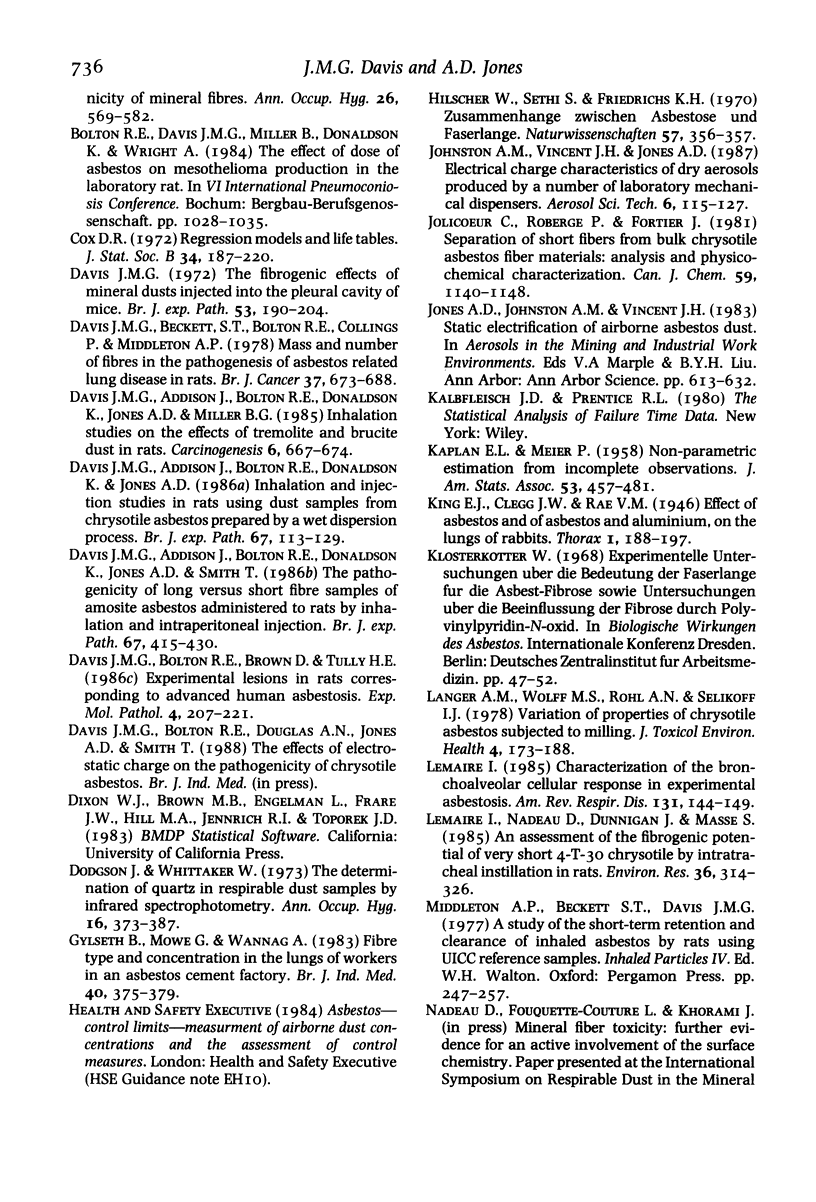
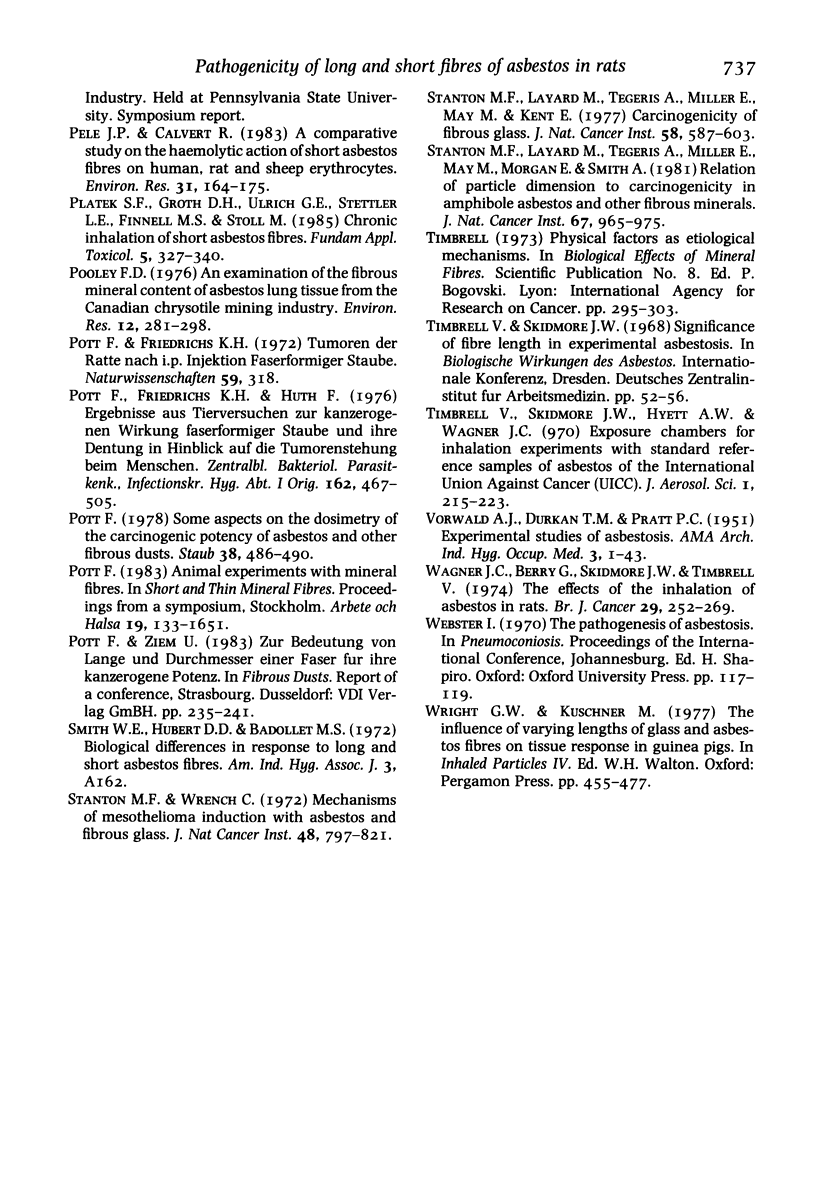
Images in this article
Selected References
These references are in PubMed. This may not be the complete list of references from this article.
- Bolton R. E., Davis J. M., Donaldson K., Wright A. Variations in the carcinogenicity of mineral fibres. Ann Occup Hyg. 1982;26(1-4):569–582. [PubMed] [Google Scholar]
- Davis J. M., Addison J., Bolton R. E., Donaldson K., Jones A. D., Miller B. G. Inhalation studies on the effects of tremolite and brucite dust in rats. Carcinogenesis. 1985 May;6(5):667–674. doi: 10.1093/carcin/6.5.667. [DOI] [PubMed] [Google Scholar]
- Davis J. M., Bolton R. E., Brown D., Tully H. E. Experimental lesions in rats corresponding to advanced human asbestosis. Exp Mol Pathol. 1986 Apr;44(2):207–221. doi: 10.1016/0014-4800(86)90071-7. [DOI] [PubMed] [Google Scholar]
- Davis J. M. The fibrogenic effects of mineral dusts injected into the pleural cavity of mice. Br J Exp Pathol. 1972 Apr;53(2):190–201. [PMC free article] [PubMed] [Google Scholar]
- Gylseth B., Mowé G., Wannag A. Fibre type and concentration in the lungs of workers in an asbestos cement factory. Br J Ind Med. 1983 Nov;40(4):375–379. doi: 10.1136/oem.40.4.375. [DOI] [PMC free article] [PubMed] [Google Scholar]
- Hilscher W., Sethi S., Friedrichs K. H., Pott F. Zusammenhänge zwischen Asbestose und Faserlänge. Naturwissenschaften. 1970 Jul;57(7):356–357. doi: 10.1007/BF01173115. [DOI] [PubMed] [Google Scholar]
- Lemaire I. Characterization of the bronchoalveolar cellular response in experimental asbestosis. Different reactions depending on the fibrogenic potential. Am Rev Respir Dis. 1985 Jan;131(1):144–149. doi: 10.1164/arrd.1985.131.1.144. [DOI] [PubMed] [Google Scholar]
- Pelé J. P., Calvert R. A comparative study on the hemolytic action of short asbestos fibers on human, rat, and sheep erythrocytes. Environ Res. 1983 Jun;31(1):164–175. doi: 10.1016/0013-9351(83)90073-7. [DOI] [PubMed] [Google Scholar]
- Platek S. F., Groth D. H., Ulrich C. E., Stettler L. E., Finnell M. S., Stoll M. Chronic inhalation of short asbestos fibers. Fundam Appl Toxicol. 1985 Apr;5(2):327–340. [PubMed] [Google Scholar]
- Pooley F. D. An examination of the fibrous mineral content of asbestos lung tissue from the Canadian chrysotile mining industry. Environ Res. 1976 Dec;12(3):281–298. doi: 10.1016/0013-9351(76)90038-4. [DOI] [PubMed] [Google Scholar]







